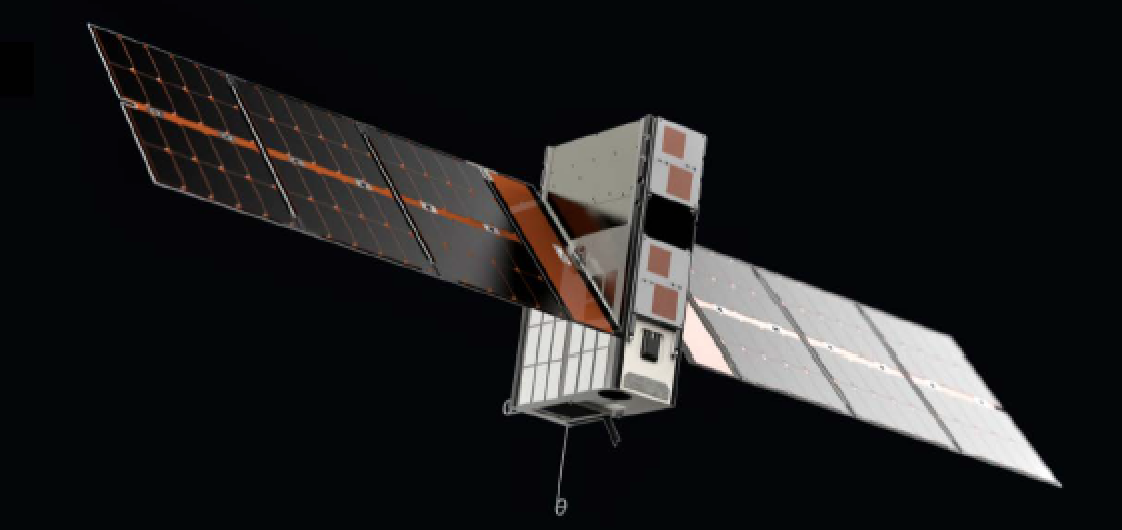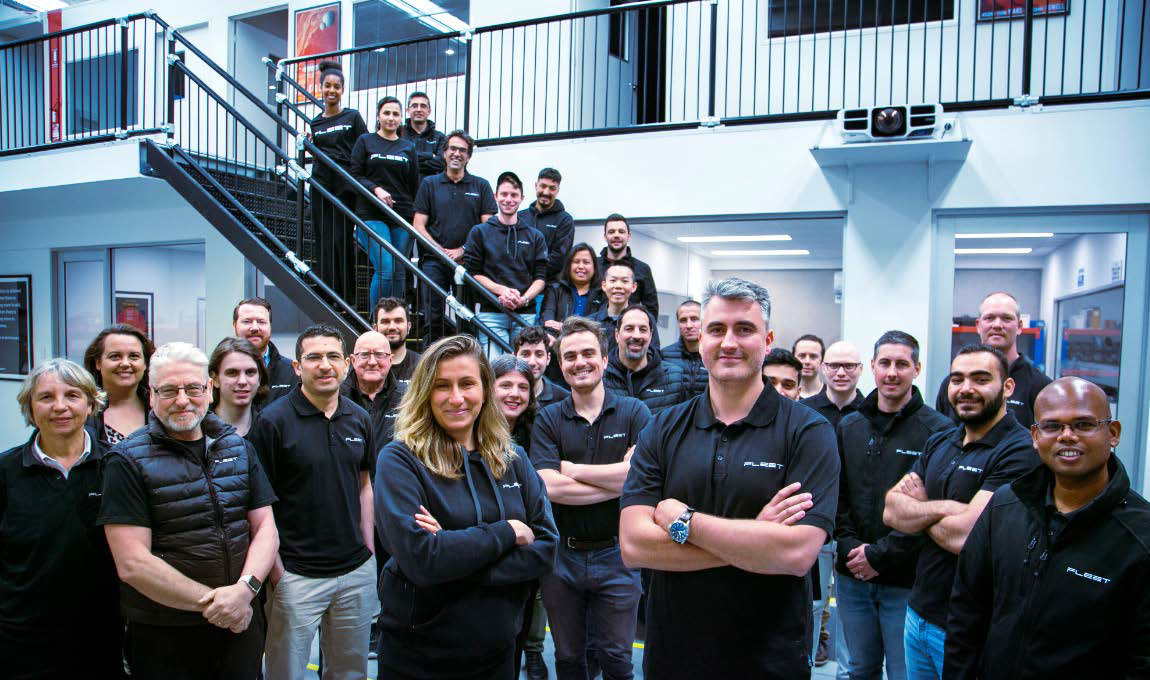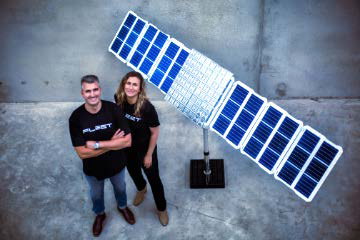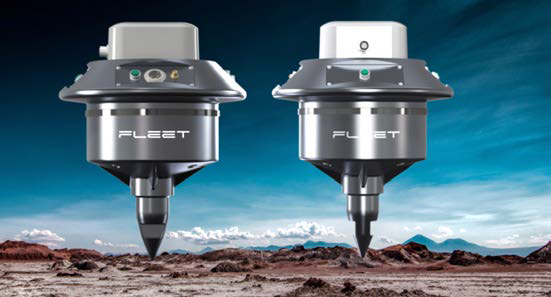Fleet Space’s GeoSphere is a first-of-its-kind system that combines wireless Geodes, edge computing and a constellation of low earth orbit (LEO) nanosatellites to discover critical resources up to 100 times faster than traditional methods. It also drastically reduces the requirement for environmentally damaging elements of existing surveyance practices, such as the use of explosives, noise machines and drilling. In this sense it is a passive, non-destructive technique to assess site viability for mineral and material deposits.
Deposits of copper, nickel, cobalt, gold and lithium for example, which is used to create zero emissions car batteries can now be discovered through a 50 sq/km grid of satellite-enabled Geodes, which can be easily installed by small, local teams. These are hand-transportable sensors which dramatically reduces the logistics requirements for remote exploration projects. It also allows explorers to adapt their approach quickly without the need to dismantle and move heavy equipment.

Each wireless, battery-operated Geode contains a sophisticated processing unit, satellite transmitter and a seismic sensor. The Geodes use the principles of seismology to map the properties of the Earth’s subsurface from reflected seismic waves by recording ambient noise — a process known as Ambient Noise Tomography (ANT).
Once sufficient ANT data is gathered, Geodes partially process the raw information on site, reducing the data requirement for transmission — a practice known as ‘edge processing’ that significantly increases the speed of connectivity between Internet of Things (IoT ) devices and allows more information to be sent while drawing significantly less power. This streamlined volume of data is securely pushed to Fleet Space’s existing network of low-power small satellites. The smallsat then automatically sends the information to ground stations, dramatically reducing the time required to process data. This in turn allows explorers to make informed decisions on areas of interest much faster than traditional methods. There is now no need to wait for devices to be collected, shipped, and unpacked to collect the data.
 Fleet Space GeoSphere
Fleet Space GeoSphere
The data from each Geode is rapidly processed through a machine learning algorithm aimed to deliver a full 3D visualization of the subsurface down to 2 km depth. A clear, rich image of what resources are below ground can be generated in as little as four days — ordinarily, ANT takes 6-12 months to return a conclusive result. Using a bespoke Fleet-developed system, these visualizations are accessible to view and export anywhere on earth in real-time. The speed of this imaging now means that thousands of square kilometres of area can be imaged speed of this imaging now means that thousand in a fraction of the time of traditional methods.
Already In Operation
This combination of three radical technologies — ambient seismic noise tomography, low-power satellite connectivity and intelligent cloud processing — are employed to help leading companies with exploration for copper, gold, cobalt, nickel, lithium and other critical minerals. In a landmark 1000km2 survey in Australia’s South Eastern region, the ANT method was used to unobtrusively image regional structures and faulting in order to target a geothermal reservoir.
ANT provides a three dimensional sub-surface representation of variations in seismic velocity and is particularly useful when imaging depth of cover, structural anomalies, alteration and bedrock topography. ANT adds significant value when incorporated early in the geophysical cycle to up and down rank potential targets, combined with Fleet’s connectivity and integrated cloud processing, GeoSphere is proving to be a rapid screening tool for the mineral exploration industry.
A GeoSphere Case Study: Greenfields

Fleet Space team
Greenfields Exploration is a mineral project generator focusing on prospects of metals critical to energy generation and storage. They specialize in investigating large scale mineral exploration opportunities in regions with little or no prior investigation with a focus on reducing impact and cost wherever possible.
“We choose to work with Fleet’s GeoSphere technology to dramatically speed up and lower the cost of our remote field work in Greenland. Our approach to exploration requires imaging data that is acquired as cost effectively, quickly and as sensitive to the environment as possible. We see the potential in this technology to relieve major pressure points in mining exploration,” said Lindsay Dick, Executive Director of Greenfield’s Exploration.
Greenfields X Fleet Geosphere

Authors: Matt Pearson (l) and Flavia Tat Nardini (r).
One of their projects is based in Greenland. The focus of the investigation is in a remote location 1,000 miles away from the nearest town. This approach significantly limits the typical environmental, social and agricultural aspects associated with typical mining development.
Greenfields engaged with Fleet to address two key challenges. First, there was little data existing in Greenland. Greenfields also explores over a wide search space of approximately 1,000 km./sq. To make exploration viable, they need to narrow the search space quickly.
Fleet’s GeoSphere Technology helps Greenfields address these challenges. Connectivity dramatically reduces the time it takes for Greenfields to receive data from a survey.
This makes for faster decision-making times, improving the narrowing down of search areas by an order of magnitude. Indeed, Fleet’s Geosphere technology allows Greenfields to access data within a week of placing geodes in the ground versus 10 weeks using traditional mining methods.
The partnership also significantly reduces costs — with total savings of one third versus more traditional methods. This in turn dramatically reduces environmental impact as geodes only need to sit on top of land rather than the normal requirement for more evasive, machine and vehicle heavy techniques.
Author Flavia Tata Nardini was born and educated in Italy where she completed a Masters Degree in Space Engineering at the University La Sapienza in Rome. Her career in space started as a Propulsion Test Engineer (more commonly known as rocket science) at the European Space Agency (ESA). A stint at TNO, the Netherlands Organisation for Applied Scientific Research followed before CubeSat Development at the University of Adelaide. Flavia then founded LaunchBox with Matt Pearxon with a clear mission to further Australia’s space industry and engage young people in STEM careers. This led to the creation of their second venture together, Fleet Space Technologies.

Fleet Space Geodes
Author Matt Pearson is a proven entrepreneur with business interests that span internet ventures, new mobility technologies and his work as co-Founder of Fleet Space Technologies. At Fleet Space, his role as COO is driving the company towards its mission to realize the potential of Small Satellite technology to secure planet-wide coverage for millions of Internet of Things industrial devices. Matt was born in South Africa but settled in Sydney, Australia, where he founded his first successful internet venture. Since then, he has become a major driver of Australia’s emergence as a global center of excellence in space and advanced aerospace technologies through his roles at Fleet and as a pioneer in the emerging eVTOL sector through the creation of Airspeeder, the world’s first racing series for electric flying racing cars.
Fleet Space Technologies is one of Australia’s leading space company. It is Headquartered in Adelaide, South Australia, the center of the country’s rapidly growing space industry. Fleet also has a global presence including a US HQ in Houston Texas, the home of NASA. Fleet is rapidly expanding its satellite constellation to provide limitless data and global reach to realize the potential of millions of Internet of Things (IoT ) devices. This is informed by a vision that will see Fleet deliver connectivity on the Earth, Moon and Mars in collaboration with the world’s leading space agencies and innovative companies. Customers around the world and in a multitude of sectors already trust Fleet to meet their challenges by harnessing the power in a multitude of sectors already trust Fleet to meet their challe of global connectivity and the most innovative technologies.
fleetspace.com

